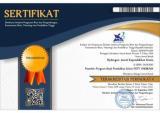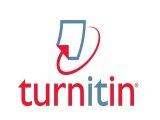Pengembangan Digital Flipbook untuk Menfasilitasi Kebutuhan Belajar Multiple Representation pada Materi Sel Volta
Abstract
The voltaic cell teaching materials used in high school are still in the form of textbooks that do not present multiple representations of chemistry, namely the macroscopic, submicroscopic, and symbolic levels. The three levels of chemical representation can be visualized using flipbook teaching materials so that students are expected to understand the voltaic cell material. Teaching materials are used to support the learning process. Current learning still uses conventional learning models that only focus on teachers. Constructivist-based active learning is needed because it involves students so that learning is more meaningful. One of the constructivist learning models is the guided inquiry learning model which includes observing, asking questions, compiling hypotheses, gathering information, testing hypotheses, and concluding. The purpose.of this development.is to.produce a proper guided inquiry-based flipbook teaching material. The flipbook teaching.materials were developed.using the Four-D model (define, .design, .develop,and.disseminate) but the disseminated stage was not carried out. Media and material validation was carried out by five chemistry lecturers. The legibility test was carried out by 50 high school alumni with a specialization in Science. The assessment uses a Likert scale accompanied by comments, suggestions from the validator, and audience. The data obtained from the analysis questionnaire to determine the feasibility level of the product using the percentage technique. The validation of the flipbook teaching materials development product in terms of material obtained an average score of 85.4%, validation in terms of media.obtained.an.average percentage of 85.5%, while the readability test results obtained.an.average.percentage of 87%. Based on the results.of material validation, media, and legibility tests, it can be concluded that the flipbook teaching materials guided inquiry-based voltaic cells are very suitable as a learning resource.
Full Text:
PDFDOI: https://doi.org/10.33394/hjkk.v8i2.3194
Refbacks
- There are currently no refbacks.

This work is licensed under a Creative Commons Attribution-ShareAlike 4.0 International License.





